Things to do in La Paz
Sightseeing in La Paz can be physically demanding, given its altitude. Visitors should allow themselves time to acclimatise before beginning their adventures. The symptoms of mild altitude sickness should have lessened after a day or two, after which travellers can enjoy the city's signature wonders. People-watching from café windows and sampling local delicacies are popular tourist activities. La Paz's high altitude also means visitors can expect cold conditions, regardless of the season. They should remember to pack warm clothing.
Regarding transport, much of central La Paz is walkable, though hillsides may be challenging. Buses and mini-buses operate along many routes, and plenty of taxis are available. Transport is also extremely cheap. That said, the bus system can seem incredibly chaotic for the uninitiated, making taxis the better bet in most cases.
Travellers should carry small denominations of money, as they'll often find locals who are unwilling or unable to give change for large bills. The advice applies to shopping, sightseeing and taking public transport.
Top tourist attractions include the bizarre and fascinating Witches' Market (Mercado de Brujas), the Mi Teleférico cable car, and the beautiful San Francisco Church (Iglesia de San Francisco). Tourists can choose from a number of walking tours, which take in the main sights and landmarks.
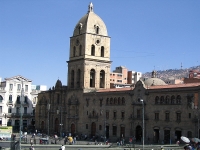
Iglesia de San Francisco
People congregate in this imposing church's plaza, which is a mixture of neo-classical Spanish and mestizo architecture. Construction began in 1549 and only finished in the mid-18t…
Iglesia de San Francisco
People congregate in this imposing church's plaza, which is a mixture of neo-classical Spanish and mestizo architecture. Construction began in 1549 and only finished in the mid-18th century. Oftentimes, travellers will see colourful Quecha or Aymara wedding processions on Saturday mornings, leading to and from the church. The plaza is a wonderful place to pass the time and watch Bolivian life unfold on any day of the week. Visitors should climb the atmospheric stairway to the fabulous rooftop and enjoy the great views of the city.
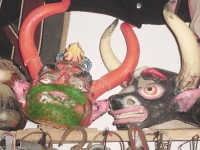
The Witches’ Market (Mercado de Brujas)
Mercado de Brujas (the Witches' Market) offers tourists a truly Bolivian experience. Situated in a maze of narrow alleys in La Paz, it stocks an unusual collection of merchandise, …
The Witches’ Market (Mercado de Brujas)
Mercado de Brujas (the Witches' Market) offers tourists a truly Bolivian experience. Situated in a maze of narrow alleys in La Paz, it stocks an unusual collection of merchandise, including charms, potions, and herbs used in Aymara traditions. The traditional market scene stretches around it, selling a huge a variety of everyday goods, as well as Andean art and handicrafts. Visitors can expect to see yatiri (witch doctors), who wear dark hats and carry pouches of coca for fortune telling.
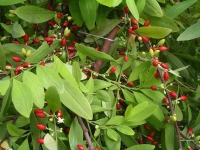
Museo de Coca (Coca Museum)
The museum covers the role of coca in Bolivia's culture and traditions. Visitors will learn about the leaf's healing properties, its use in Andean religious ceremonies, its chemica…
Museo de Coca (Coca Museum)
The museum covers the role of coca in Bolivia's culture and traditions. Visitors will learn about the leaf's healing properties, its use in Andean religious ceremonies, its chemical breakdown and different species. They will also canvas its use by soft-drink and pharmaceutical companies, and how it is turned into cocaine. Actually, one of the institution's missions in to counter the plant's cocaine-related stigma. Among other things, guests will leave knowing how to correctly chew coca leaves, which will allow them to feel its stimulating effects.
Address Linares 906, La Paz Zona 1, Bolivia
Website www.cocamuseum.com
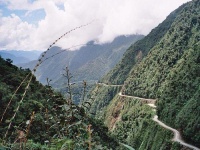
Yungas Road
Yungas Road is not an attraction for the faint of heart. Dubbed the 'El Camino de la Muerte' (Road of Death), it stretches between La Paz and Coroica and claimed 200 to 300 lives e…
Yungas Road
Yungas Road is not an attraction for the faint of heart. Dubbed the 'El Camino de la Muerte' (Road of Death), it stretches between La Paz and Coroica and claimed 200 to 300 lives every year until 1994. Paraguayan prisoners built the road during the 1930s Chaco War, and it has extreme drops of up to 2,000 feet (609m). The Yungas Road has since become a popular tourist destination among thrill seekers, particularly mountain bikers. It remains dangerous, though, and trucks have serious problems passing each other. Crosses dot the road and mark where cars have plunged off the steep cliff. Drivers on Yungas Road must obey a strict set of rules, as rain and fog often reduce visibility and there are no guard rails. Contrary to normal Bolivian driving rules, drivers keep to the left, and uphill vehicles always have the right of way. Yungas Road has been upgraded with many new safety measures in the last decade, but the original route, now called North Yungas Road, is still in use by tourists.
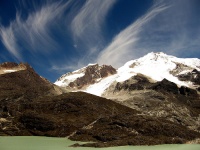
Huayna Potosi
Located in the Cordellera Real range, Huayna Potosi is a tremendous stop for adventurous travellers. The mountain is a mere 15 miles (24km) north of La Paz and only around 1,000 pe…
Huayna Potosi
Located in the Cordellera Real range, Huayna Potosi is a tremendous stop for adventurous travellers. The mountain is a mere 15 miles (24km) north of La Paz and only around 1,000 people a year make it to the summit. Many of those who attempt the climb turn back due to cold temperatures and the high altitude. The climb can be done in two daily stages and several difficult snow and ice routes go up the face. Those who make it to the summit will be rewarded with breath-taking views over the Cordillera Real range, Lake Titicaca and La Paz.
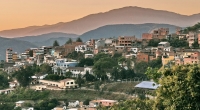
Coroico
Coroico is a relaxing, low-altitude spot where visitors can escape frigid highland nights. The trip from La Paz traverses the Yungas Road, which makes for a photogenic and adrenali…
Coroico
Coroico is a relaxing, low-altitude spot where visitors can escape frigid highland nights. The trip from La Paz traverses the Yungas Road, which makes for a photogenic and adrenalin-charged entrance into this laid-back resort town. Perched atop the peak of Cerro Uchumachi, Coroico offers gorgeous views of orchards, forested canyons, cloud-covered mountain tops, and the snow-capped peaks of the Cordillera Real. Coroico is a good base for some interesting hikes into the jungle and for mountain-biking trips into the local area, including guided descents of the precipitous highway.
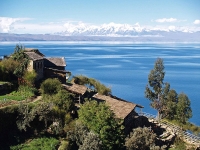
Lake Titicaca
Lake Titicaca is the biggest in South America, and is one of the highest on the planet. Deep and enormous, it borders Bolivia and Peru and sits between Andean mountain ranges. More…
Lake Titicaca
Lake Titicaca is the biggest in South America, and is one of the highest on the planet. Deep and enormous, it borders Bolivia and Peru and sits between Andean mountain ranges. More than 25 rivers flow into the lake, with some 41 islands breaking through the surface of this majestic freshwater giant. Interestingly, the Uros people live on around 62 floating islands made entirely from reeds, and are a must on any trip to Titicaca. Near the southern shore lies the ruins of Tiahuanaco, seen as a remnant of a major pre-Incan civilisation with enigmatic temples and intriguing monoliths.
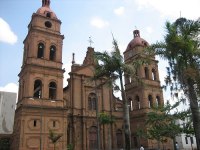
Santa Cruz
In contrast with Bolivia's other cities, Santa Cruz enjoys a tropical feel which can be a welcome break from the harshness of the Andes. Strolling through town is a great way to ta…
Santa Cruz
In contrast with Bolivia's other cities, Santa Cruz enjoys a tropical feel which can be a welcome break from the harshness of the Andes. Strolling through town is a great way to take in the beautiful colonial architecture before mingling with locals in the Plaza 24 de Septiembre, where they play chess, feed pigeons or sip wine at outdoor cafes. Santa Cruz is also known as the fashion capital of Bolivia, its cosmopolitan atmosphere extending to discos, museums and art galleries. Santa Cruz's comfort and convenience make it an ideal base from which to explore some of Bolivia's most popular attractions, such as Park Amboro, the historical Jesuit missions and La Paz.



